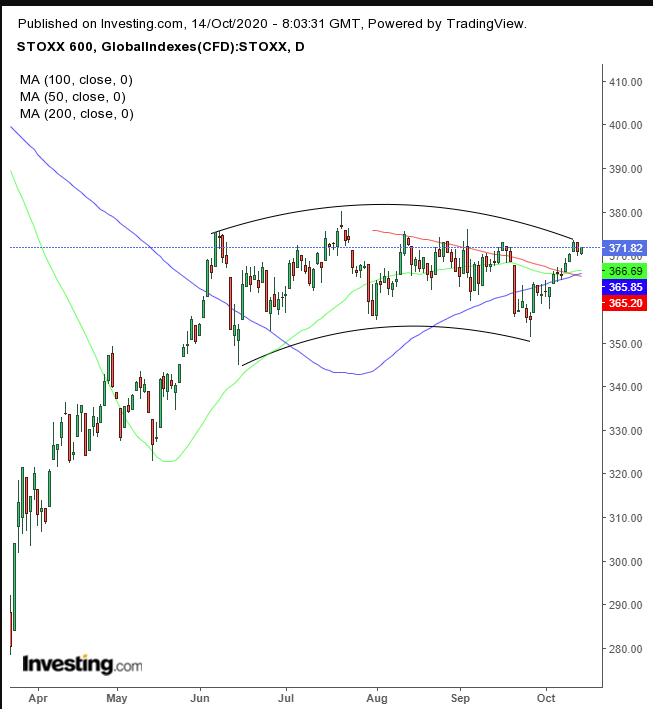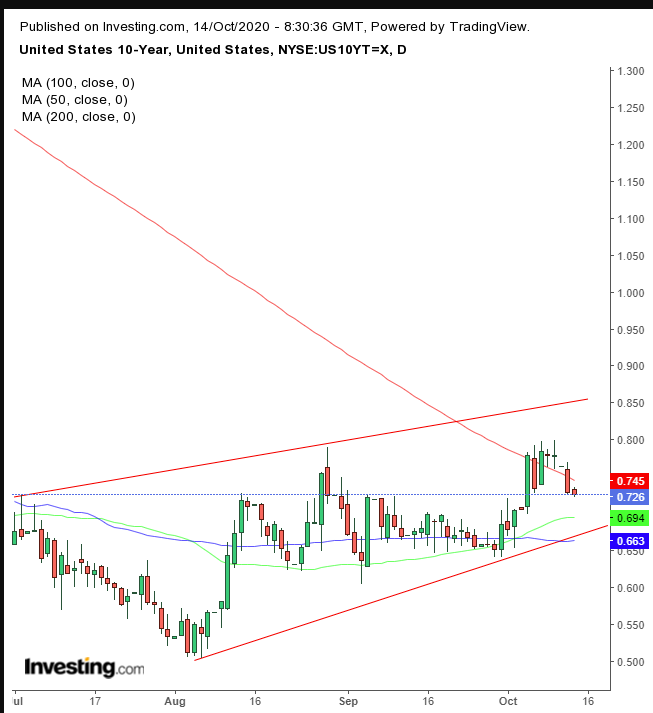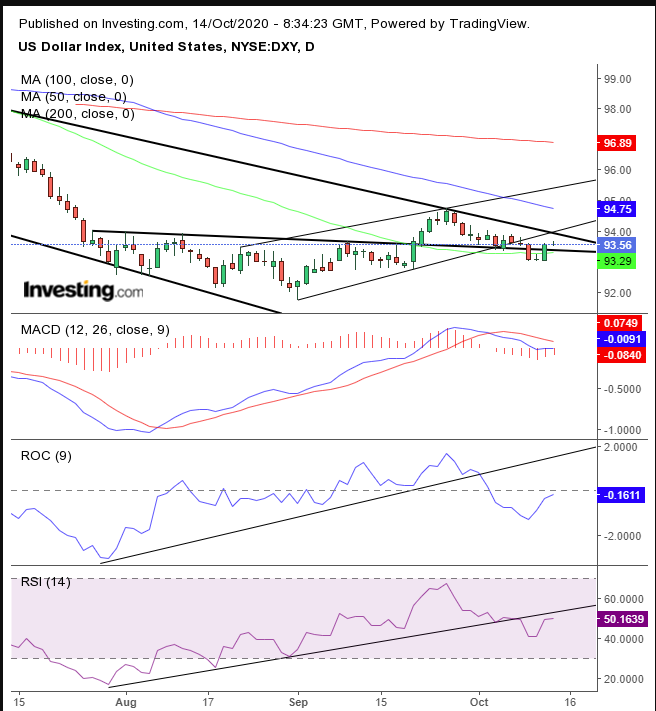- Investors are hoping for a new headwind from earnings as US stimulus prospects fade
- Asia trading dampened by pandemic fears
- Gold advances against dollar strength and increased stock prices
Key Events
US contracts, including for the Dow, S&P, NASDAQ and Russell 2000, as well as European stocks waver on Wednesday ahead of earnings from big banks including Wells Fargo (NYSE:WFC), Goldman Sachs (NYSE:GS) and Bank of America (NYSE:BAC).
Global Financial Affairs
US futures fell early in pre-US market open trading as investors' hopes that earnings season would provide some upward impetus waned. Sentiment deteriorated on the news that coronavirus hospitalizations in the US hit their highest level in six weeks and as optimism of an economic stimulus package continued to evaporate.
The European Stoxx 600 Index whipsawed, opening lower, extending its decline, then rebounding only to fall back again into the red, bank shares rose while travel shares fell on increased fears of additional lockdowns.

From a technical perspective, the pan-European index struggled against resistance of the top of a rounding range since early June.
Most of the Asian benchmarks slumped on pandemic jitters, ending a four-day rally. Escalating coronavirus cases combined with stalling progress on a vaccine weighed on traders. Japan’s Nikkei 225 (+0.1%) and Hong Kong’s Hang Seng (+0.07%) were the exceptions.
The Nikkei's slight advance was led by Paper & Pulp, Railway & Bus and Real Estate. All rebounded from a lower open and disappointing industrial production data.
The Hang Seng opened slightly higher from the outset, as traders returned after the city’s markets were shut Tuesday during tropical storm Nangka. Investors were bouyed by better-than expected Chinese data.
South Korea’s KOSPI fell almost a full percent, lagging regional peers, as spiking COVID cases countered expectations of an immediate economic recovery.
China’s Shanghai Composite dipped 0.6%, bogged down by both profit-taking on agricultural stocks, after a steep advance, and investors forced to liquidate holdings to raise cash due to new debt-ratio caps.
US stocks dropped on Tuesday as traders priced out another round of coronavirus fiscal aid due to a stalemate between President Donald Trump and his own party on Speaker Nancy Pelosi’s demand that the administration revamp its offer. Senate Republican majority leader Mitch McConnell’s desire to vote next week on only a single stimulus provision provoked the President to tweet:
“Go big or go home!!”
Banks led the declines on the S&P 500 Index during yesterday's Wall St. session, with JPMorgan Chase (NYSE:JPM) and Citigroup (NYSE:C) selling off ahead of earnings, spurring bargain hunters to buy the dip, leading to a futures rally in pre-US open trading today.
Yields, including for the 10-year Treasury note, extended a decline after managing to remain above the 200 DMA for three days.

They have been falling toward the bottom of a rising channel since the early-August low.
The dollar jumped with the increased demand for Treasuries, extending a climb back above the neckline of a bottom.

Will the greenback manage to push back into the short-term rising channel and break free of the falling channel since the March high? Indicators suggest otherwise.
Gold advanced despite a strengthening dollar and rising futures and stocks, leaving technicals as the only remaining explanation.

The yellow metal rebounded off the bottom of a range, a potential bearish flag, following a bearish symmetrical triangle—both of which are trapped within a bullish falling wedge. The direction of the breakout will set the momentum for the following move.
Oil was little changed after fluctuating, as Saudi Crown Prince Mohammed Bin Salman and Russian President Vladimir Putin urged peers to honor an agreement on cuts.
Up Ahead
- US inflation figures will be released before the start of trading in New York.
- Australia's Employment Change data prints later today; it's anticipated to come in at a head-spinning -35.0K.
- U.K. Prime Minister Boris Johnson set a deadline of Thursday to thrash out the outline of a future trade deal with the European Union.
- European Central Bank President Christine Lagarde leads off the virtual annual meetings of the International Monetary Fund and the World Bank Group, which is ongoing until Oct. 18.
Market Moves
Stocks
- The Stoxx Europe 600 Index fell 0.2%.
- Futures on the S&P 500 Index climbed 0.2%.
- NASDAQ futures gained 0.4%.
- The MSCI Asia Pacific Index dipped 0.3%.
Currencies
- The Dollar Index climbed 0.1%.
- The British pound declined 0.5% to $1.2873.
- The Japanese yen was little changed at 105.49 per dollar.
- South Africa’s rand weakened 0.5% to 16.5513 per dollar.
Bonds
- The yield on 10-year Treasuries declined less than one basis point to 0.72%.
- Germany’s 10-year yield sank one basis point to -0.57%.
- Britain’s 10-year yield fell two basis points to 0.219%.
